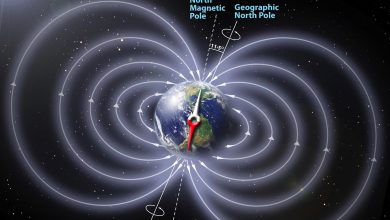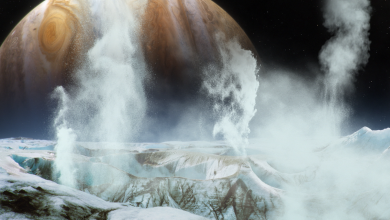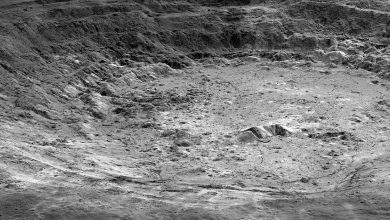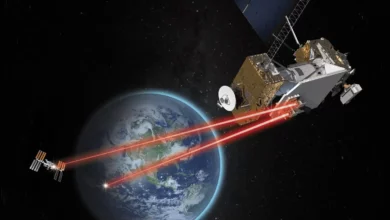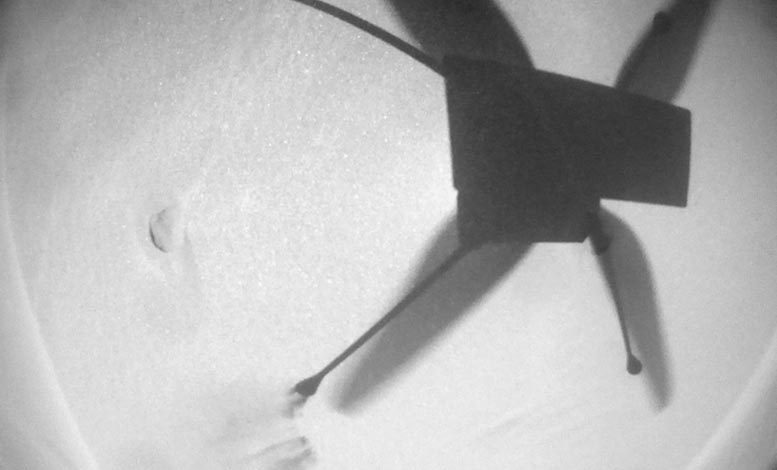
Lead Image: Mars Helicopter Sol 345 – Navigation Camera: Navigation camera image captured just as Ingenuity took off for Flight 19, showing accumulated sand flying off of one of Ingenuity’s feet. Credits: NASA/JPL-Caltech
The Ingenuity team is beginning preparations for Flight 20!
Flight 19 was successfully completed on February 7, 2022, at 20:21 PST (Sol 345 of the Perseverance mission, 12:00 LMST Local Mean Solar Time), and placed Ingenuity safely within the designated landing ellipse just above the eastern ridge of the “South Séítah” basin.
Flight 19 was a reminder of the challenges and unpredictability of the Martian environment. As discussed in our previous update, Flight 19 was delayed by an unexpected dust storm that caused a significant drop in air density and solar array output. Ingenuity continued to wake up and communicate with Perseverance during the storm and returned to its pre-storm power generation levels after the sky cleared. The dust storm did, however, leave the Ingenuity team with two additional challenges to deal with: a dirty navigation camera window and dust in the swashplate assemblies.
Comparing navigation camera images taken before and after the dust storm revealed that the storm deposited debris on the ground-facing navigation camera window, specifically around the periphery of the camera’s field of view. Debris on the navigation camera window is problematic because Ingenuity’s visual navigation software may confuse the debris with the actual ground features that it tries to track during flight, which can cause navigation errors. Fortunately, Ingenuity’s software provides a tool for dealing with this issue: The team can provide an updated image mask file that tells the visual navigation software to ignore certain regions of the image. The operations team made use of this feature and performed an image mask update late last month.
The dust storm also deposited dust and sand in Ingenuity’s swashplate assemblies. On Mars as well as on Earth, a helicopter’s swashplates are very important because they control the pitch (angle from horizontal) of the rotor blades, which is essential for stable and controlled flight. Ingenuity’s swashplate issue was first detected when the rotorcraft reported a failure during its first automated swashplate actuator self-test since the dust storm on January 28, 2022 (Sol 335 of the Perseverance mission). Data revealed that all six swashplate servo actuators were experiencing unusual levels of unusual levels of resistance while moving the swashplates over their range of motion. The team determined that the likeliest explanation for the increased resistance was that dust and sand had accumulated on the swashplate assemblies, which have exposed moving parts. This theory is supported by the fact that Perseverance also observed significant dust and sand accumulation on its upper deck following the storm.
Experiments completed during Ingenuity’s development had shown that the swashplate assemblies should be able to clear out dust and sand with repeated actuation. A new experiment was performed earlier this month, which also confirmed the swashplates’ self-cleaning ability. The team tested this approach by performing a repeat self-test routine, or “servo wiggle,” on Sol 340. The data from that activity showed a significant improvement – a reduction in servo loading, so the team followed it up with seven back-to-back servo wiggles on Sol 341. Remarkably, by the end of that activity, Ingenuity’s servo loads appeared nearly identical to nominal loads seen prior to the dust storm. Ingenuity was cleared for re-attempting Flight 19, which it completed with healthy actuator performance throughout. All in all, Flight 19 was fraught with challenges, but Ingenuity demonstrated its resilience once again, shaking off the dust and getting itself out of the South Séítah basin!
The team is now preparing for Flight 20, which will continue Ingenuity’s march alongside Perseverance back to Perseverance’s landing location — the Octavia E. Butler Landing Site. From there, the two robotic partners will begin traveling to the Jezero Crater river delta. Although they are both headed to the same meeting point, Ingenuity and Perseverance will take different routes to get to the river delta: Perseverance will drive around Séítah, and Ingenuity will take a shortcut, flying northwest across Séítah. Flight 20 will take Ingenuity to a shallow depression just southwest of its original airfield, Wright Brothers Field. This location will serve as the starting point for Ingenuity’s journey across Séítah. During Flight 20, Ingenuity is planned to traverse 1,280 feet (390 meters), at an altitude of 32.8 feet (10 meters) and a maximum ground speed of 10.1 mph (4.5 meters per second). This flight will take place no earlier than February 25. Stay tuned!
Written by Jaakko Karras, Ingenuity Chief Engineer at NASA’s Jet Propulsion Laboratory

